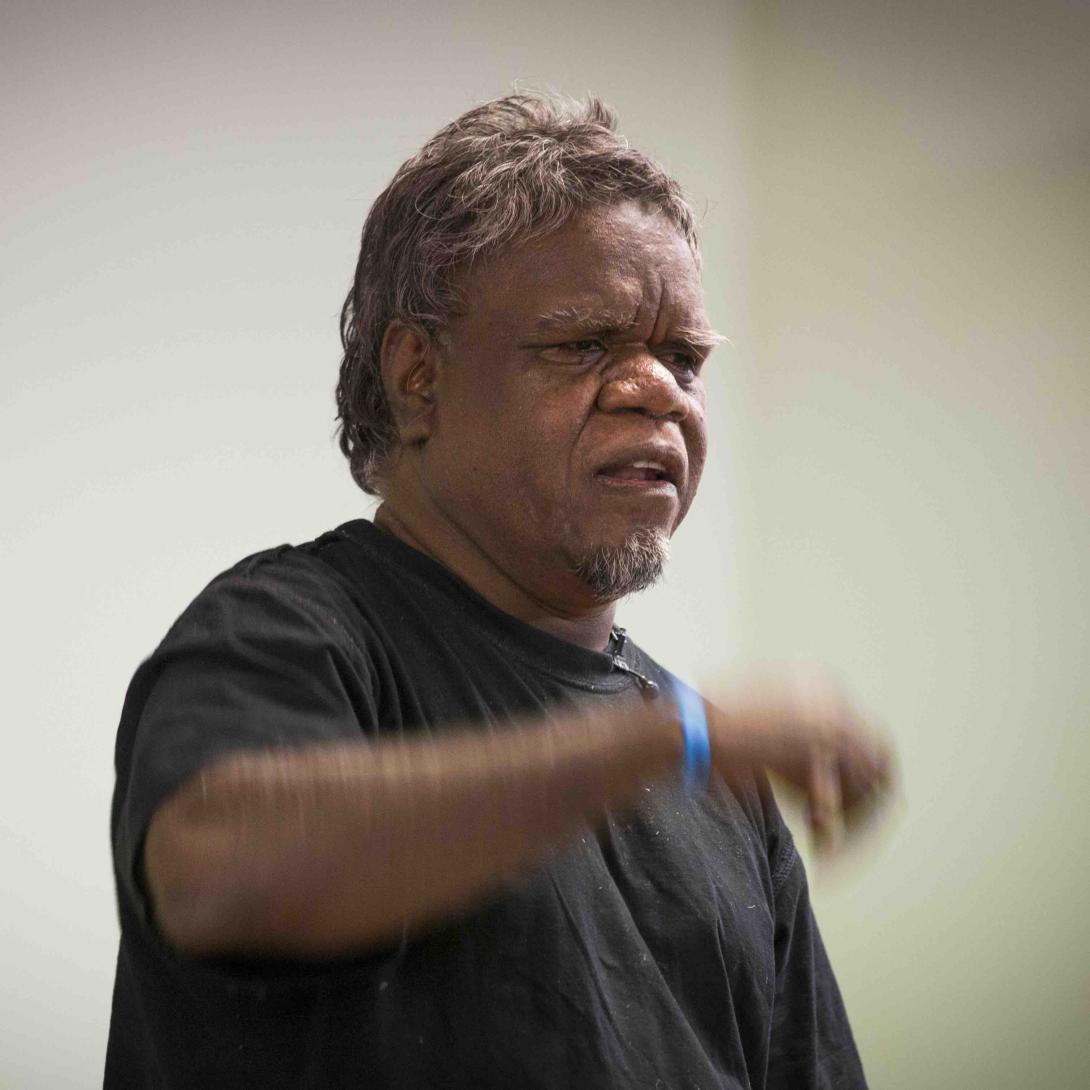Manyuwarna (Celebration) - 2005, 2014
2005 Milpirri - Jardiwanpa
Manyuwarna (Celebration) - Girls
Description of Dance or Action
Drawn from the Pilapakanyu (Waterbirds) Jukurrpa (Dreaming), the themes are of coming together to celebrate in the wet times when water is plentiful. As a starting point, we were given that with the coming of the rains the floodplains provide a feast of colour, activity and celebration. The water holes fill up and the waterbirds all come in for the celebration. Being the first Milpirri, much of the choreography had to introduce beginning dance concepts. Using the theme of water and celebration the dance begins with unison and canon ideas. The groups form a circle representing waterholes where the birds come to play. First smaller ones (in their kinship colour groups), and then one large one as the wet season develops.
Choreography
David (Japaljarri) McMicken and Jessica (Nangala) Rosewarne
2005 Milpirri - Jardiwanpa
Manyuwarna (Celebration) - Boys
Description of Dance
Drawn from the Pilapakanyu (Waterbirds) Julurrpa (Dreaming), the themes of coming together to celebrate in the wet times when water is plentiful. Following from the girls dance the boys enter and create their own water hole. This structure (standing in a circle, or an open circle in this case) works on several levels. In this case, establishing a water hole where ‘birds’ go into the centre and celebrate and have fun. But this is also a fundamental of hip hop - the cypher, where dancing takes place in the centre of the other dancers - a circle where everyone enters equally and battle it out for the best dancer.
Choreography
Nick (Japanangka) Power
2014 Milpirri - Jardiwanpa
Manyuwarna (Celebration) - Youth
Description of Dance
Drawn from the Pilapakanyu (Waterbirds) Jukurrpa (Dreaming), the themes of coming together to celebrate in the wet times when water is plentiful. This is a dance of celebration. As a Ngapa (water) dance, it belongs to the blue group and comes from a time of plenty, when rain is creating a lush healthy country. The use of the circle denotes the waterhole, as well as the cypher from hip hop culture, a place where we all come together and celebrate what we are good at doing. The dance gives the students a chance to 'show off' their best tricks as well as work in various group combinations.
The second section of the dance shows the joy of waterbirds leaping through the waterhole created by the previous dancers. The image of waterholes is reinforced by each colour group making a small circle, while the blue group moves around them, representing the waterbirds in flight. The final part of the choreography simply celebrates the joy that comes from dancing.
Choreography
Nick (Japanangka) Power (first section), and Kelly (Napurrula) Beneforti (second section), assisted by Caleb Japanangka Patrick


